Syn-urban Assemblages
Throughout North America, the suburbs are a pervasive condition that emerge at the periphery of every major metropolitan area. Ingrained cultural expectations and conventional construction methods ensure that the suburbs are reproduced using the same generic form—the single-family, detached house surrounded by a pristine, green lawn, and dependent on vehicular transportation—once considered the American Dream. It is widely accepted that the global population is urbanizing, however the reality in North America is that the greatest population growth is actually occurring in the suburbs, at the borderland between dense urban centers and expansive agricultural regions.
The novel ecosystems produced by this form of community development establish buffer zones around cities, spaces of intense, often conflicting, anthropogenic and ecological pressures. Jennifer Wolch writes in her essay Anima Urbis, “Nowhere is the complexity of human-animal spatial orderings more evident than in the urban-wildlands surrounding of metropolitan regions. Here, zoning ordinances and land use plans have often been used to allocate animals and people to designated areas, but such crisp divisions are rarely so straightforward on the ground.” The suburbs therefore provide a rich field in which to explore strategies for mediating human and animal relationships within novel ecosystems.
The novel ecosystems produced by this form of community development establish buffer zones around cities, spaces of intense, often conflicting, anthropogenic and ecological pressures. Jennifer Wolch writes in her essay Anima Urbis, “Nowhere is the complexity of human-animal spatial orderings more evident than in the urban-wildlands surrounding of metropolitan regions. Here, zoning ordinances and land use plans have often been used to allocate animals and people to designated areas, but such crisp divisions are rarely so straightforward on the ground.” The suburbs therefore provide a rich field in which to explore strategies for mediating human and animal relationships within novel ecosystems.
Syn-urban Assemblages explores how the implementation of synanthropic architectural prosthetics across a suburban community can influence patterns of development. The objective is to strategically fortify the ecological matrix by enhancing vegetation, providing habitats and increasing connectivity between existing patches and corridors. The individual implementation of each synanthropic prosthetic may have minor affect on its immediate environment. However, their multiplication could catalyze the development of new spatial typologies that shift suburban priorities from aesthetic appearances of individual properties towards the development of a robust ecosystem. Gradually these syn-urban building blocks could proliferate across neighbourhood, region and territory, negotiating the boundary between human and animal to create vibrant social and ecological communities. Suburban neighbourhoods would no longer be named after the landscapes they replaced, but for the future ecosystems they want to cultivate.
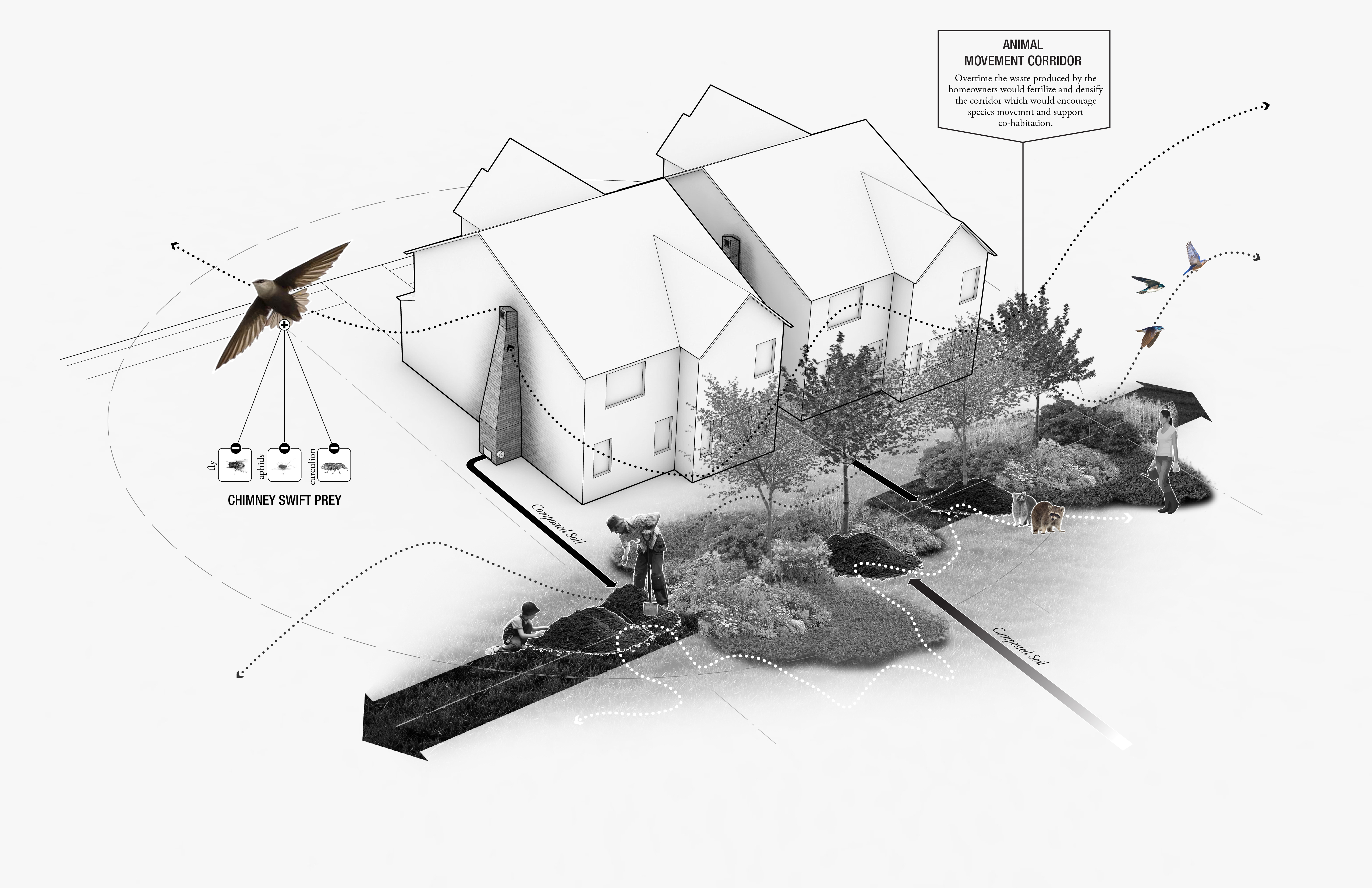 Syn-urban Typology: Animal Movement Corridor
Syn-urban Typology: Animal Movement Corridor

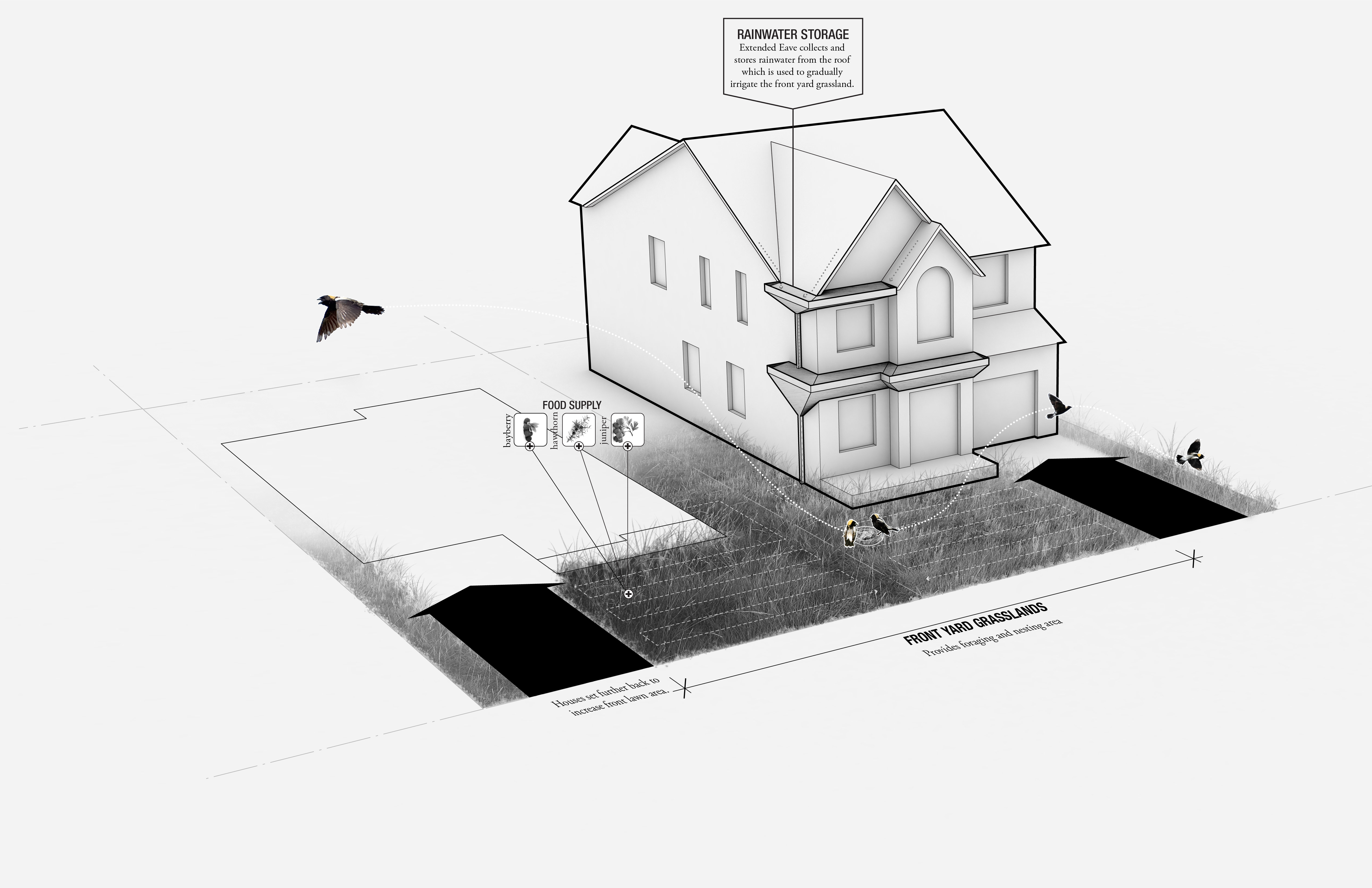
Syn-urban Typology: Habitat Patch Community

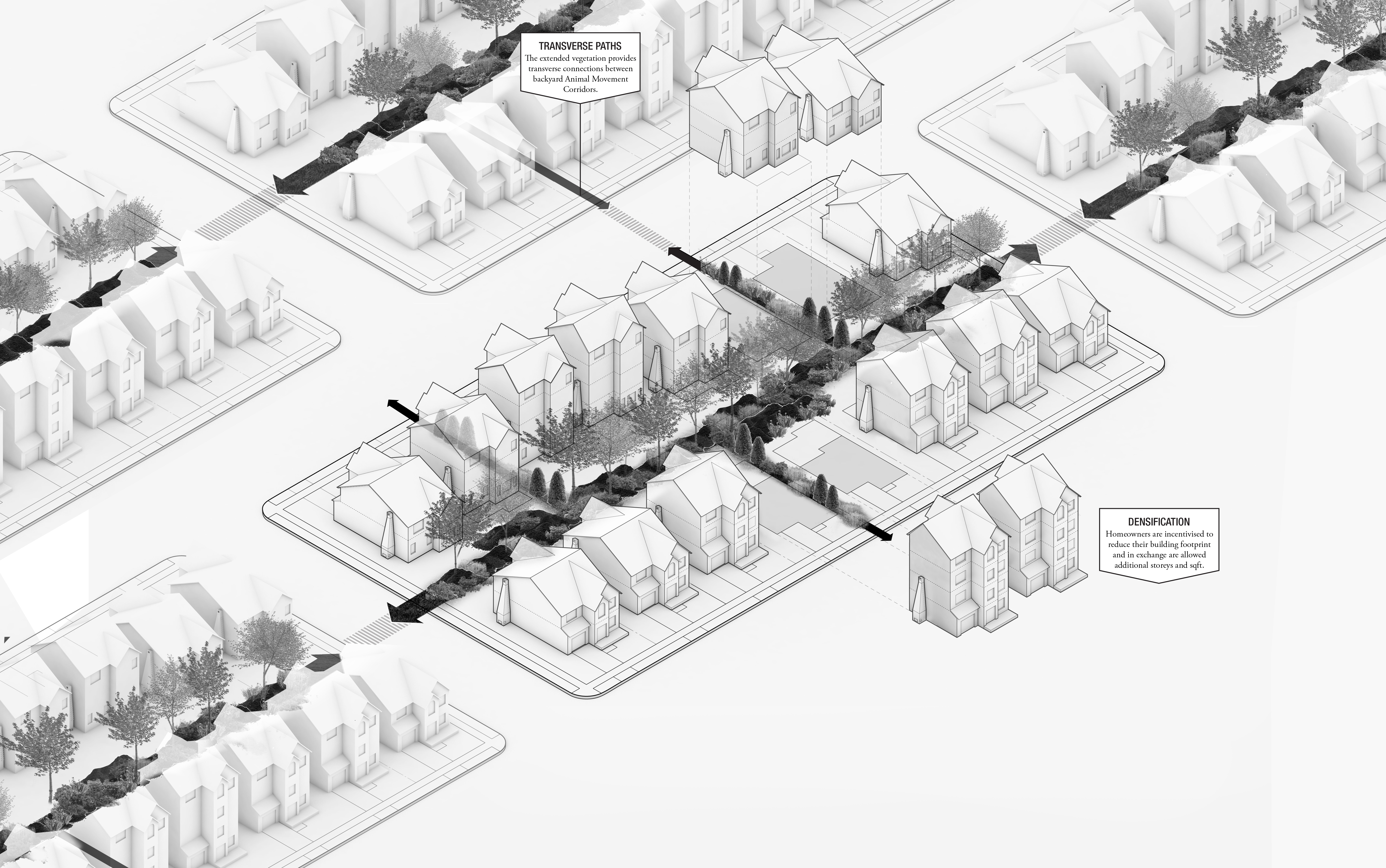
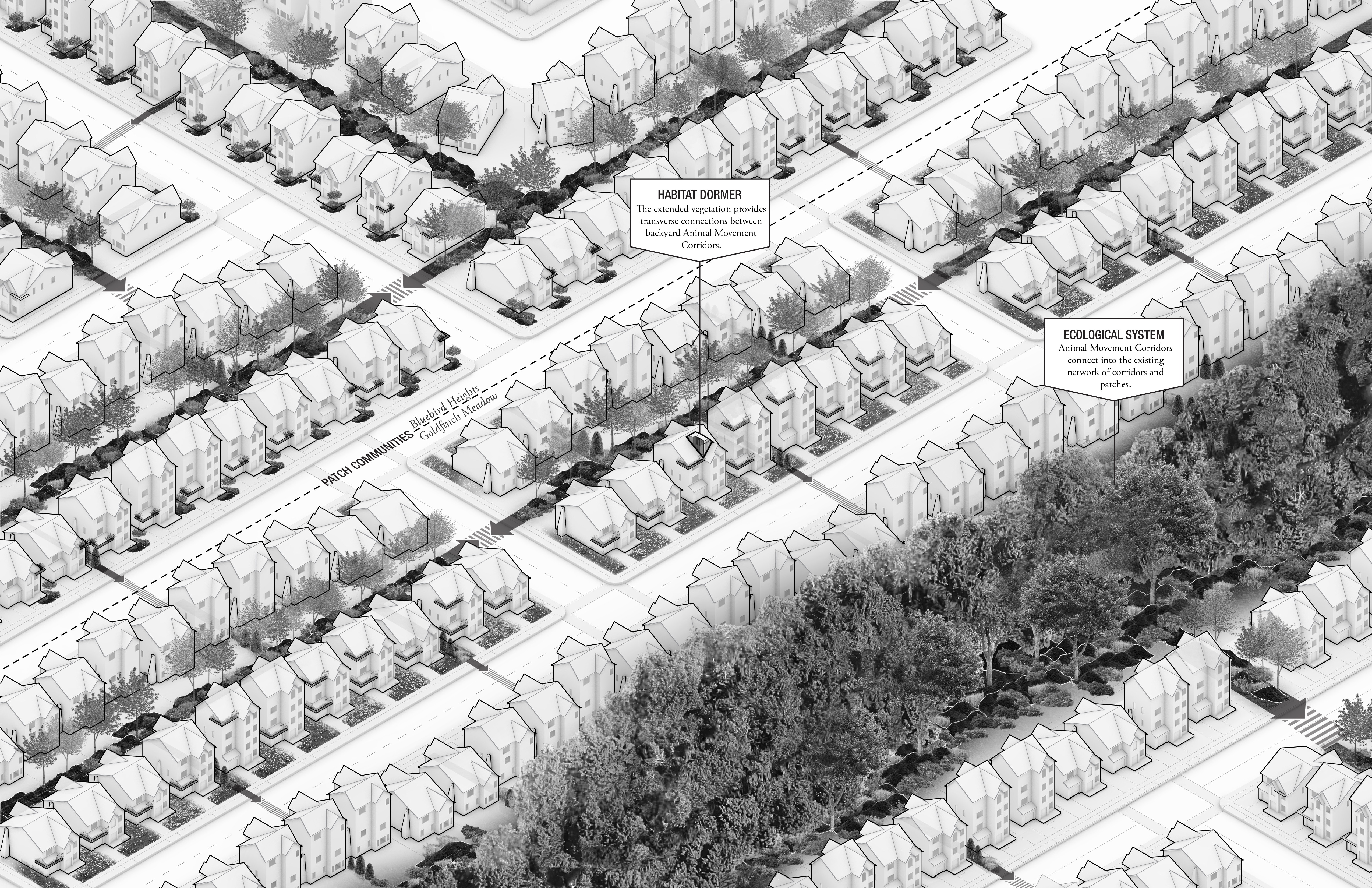
Multiplication of Syn-urban Typologies

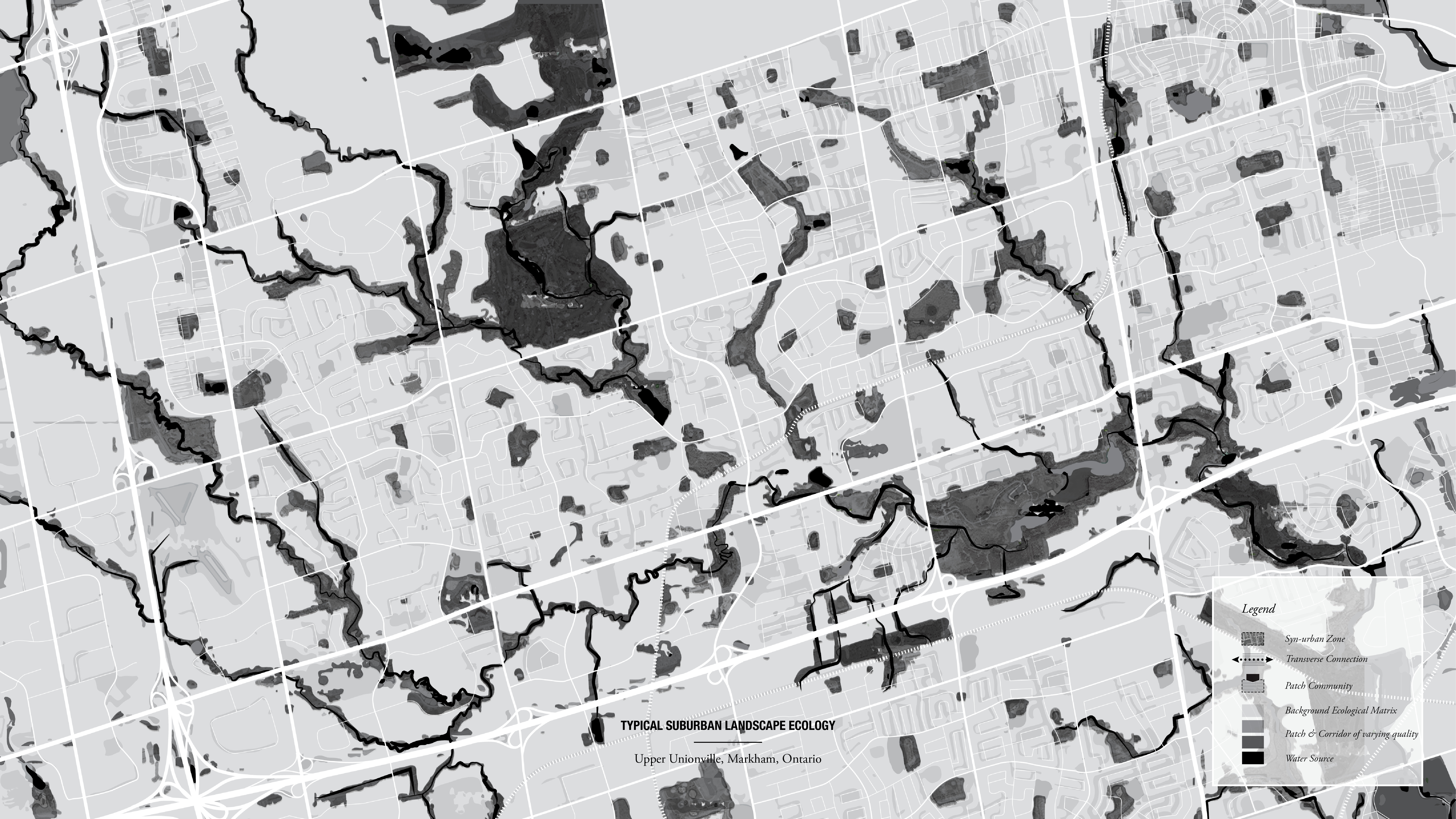
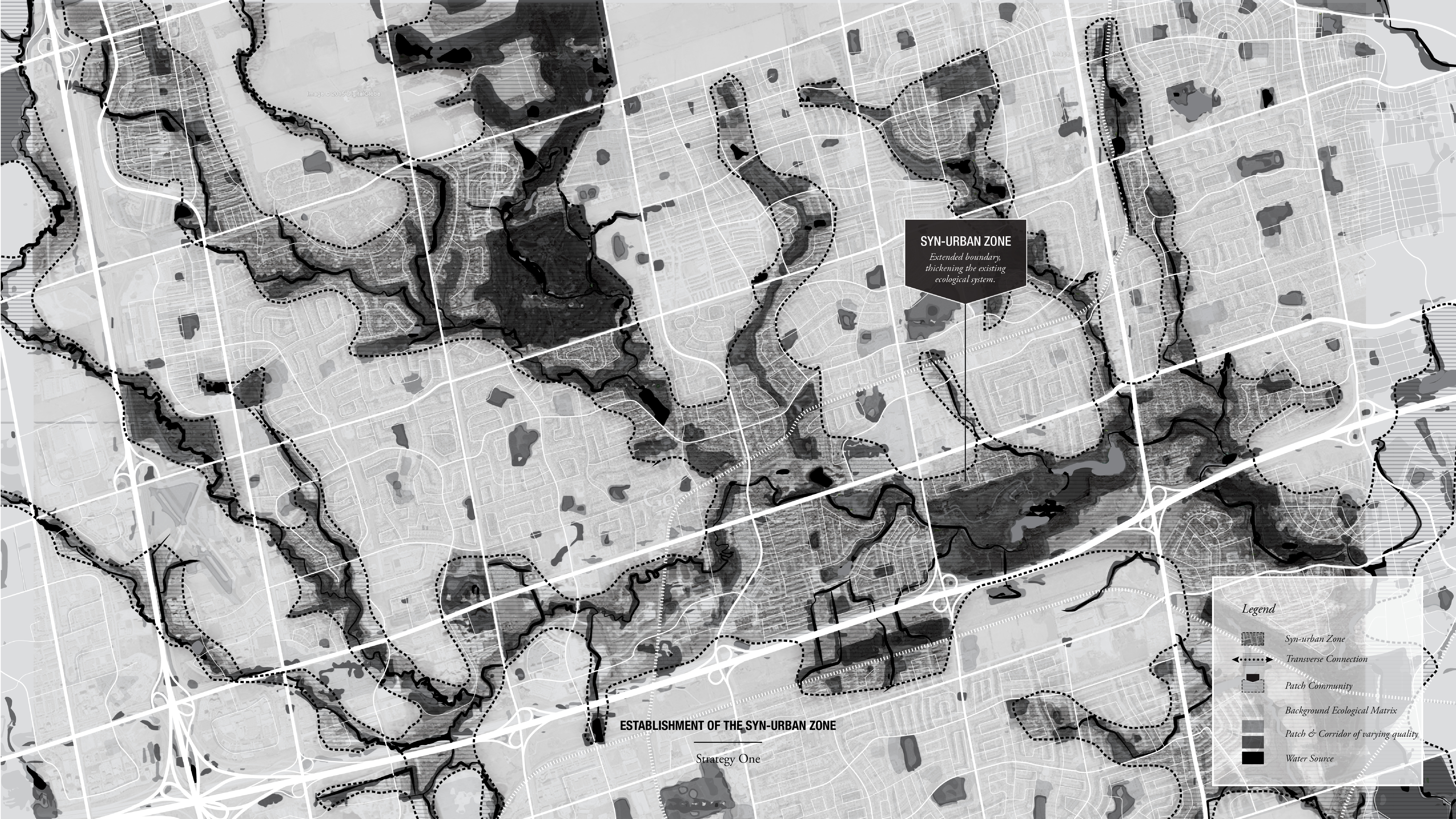
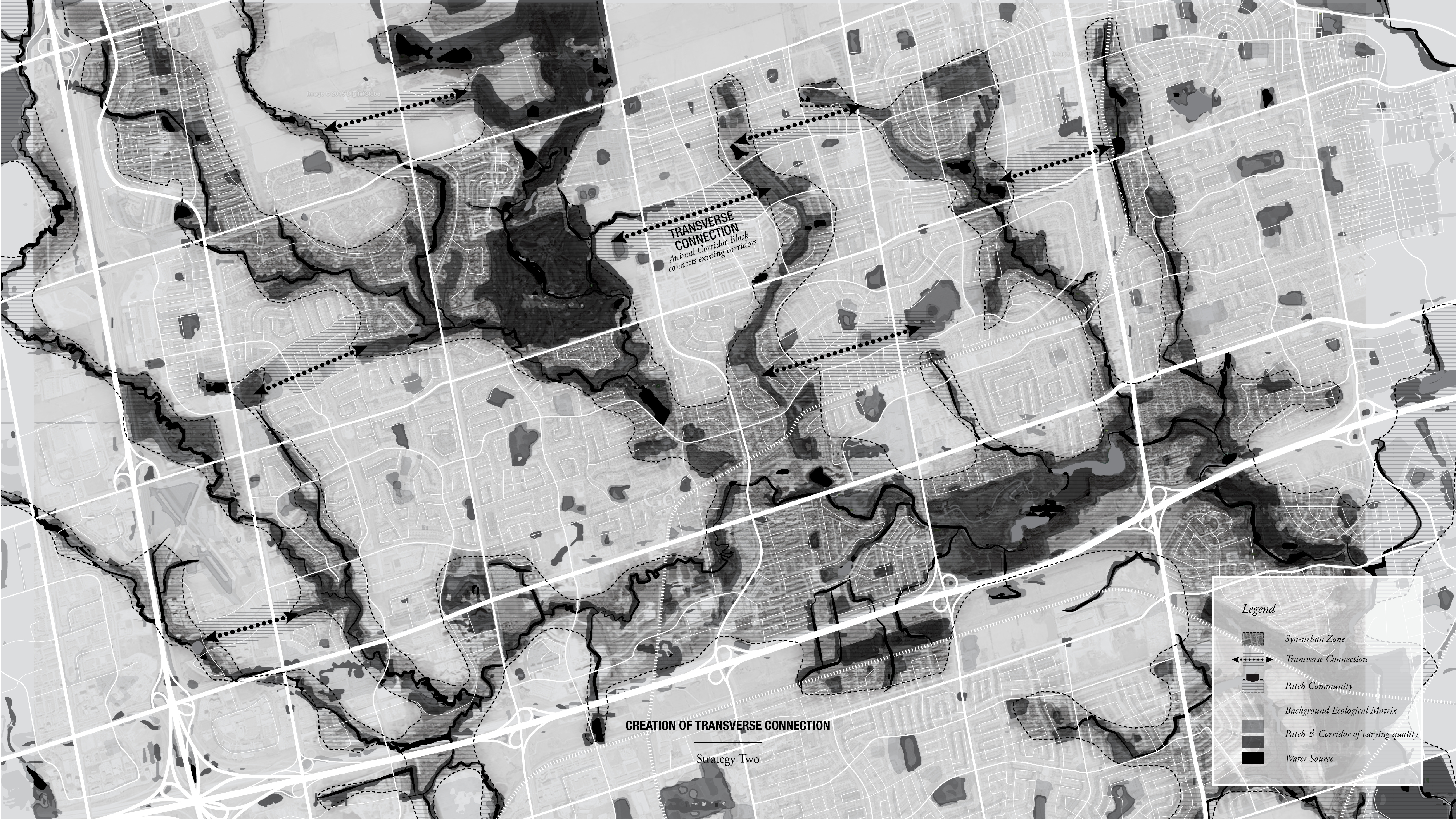
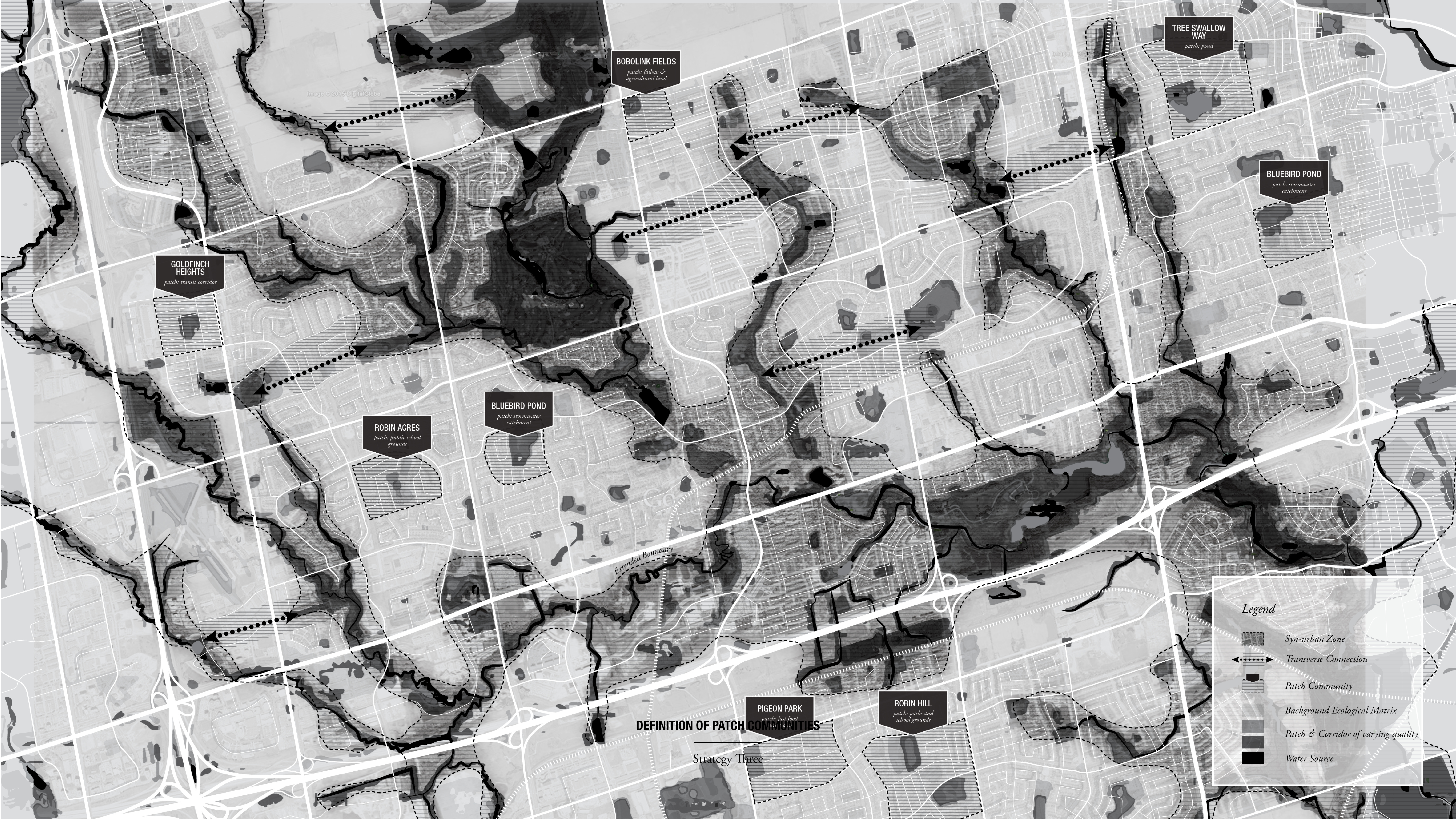
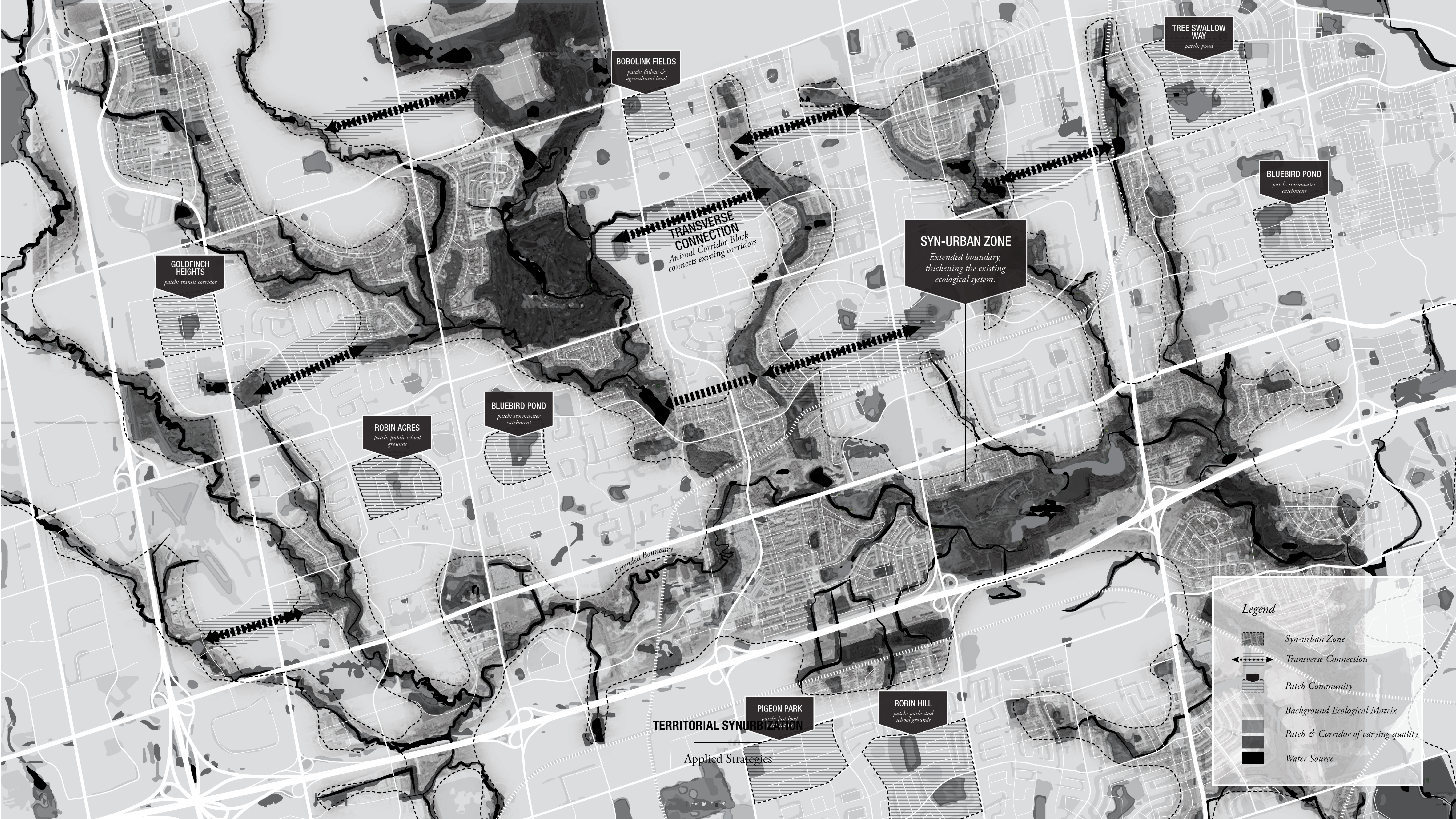
Development of Syn-urban Territory
Syn-Urban Assemblages is a portion of Sarah Gunawan’s Master of Architecture Thesis completed at the University of Waterloo School of Architecture.
Advisors: Lola Sheppard & Matthew Spremulli
Committee: Robert Corry, University of Guelph
External Reader: Joyce Hwang, University at Buffalo
Advisors: Lola Sheppard & Matthew Spremulli
Committee: Robert Corry, University of Guelph
External Reader: Joyce Hwang, University at Buffalo